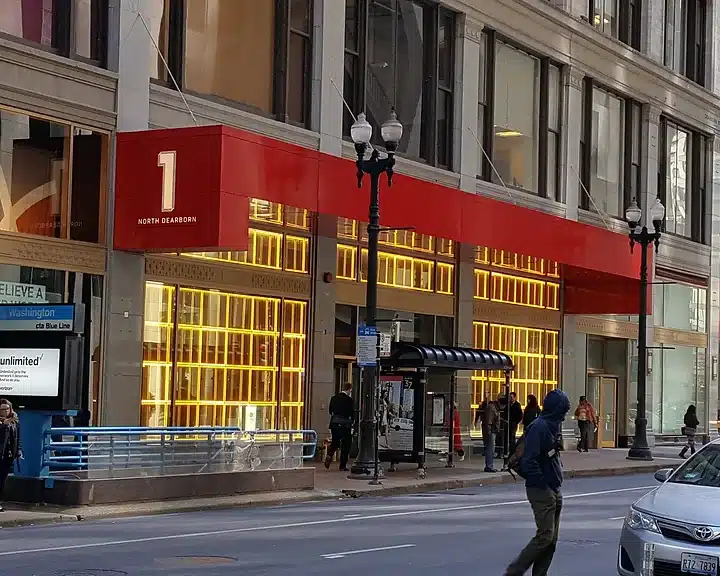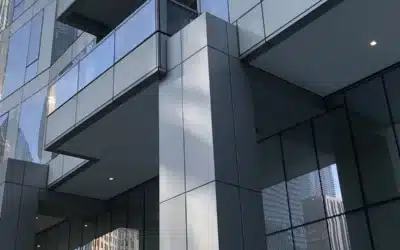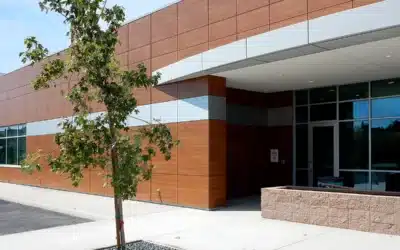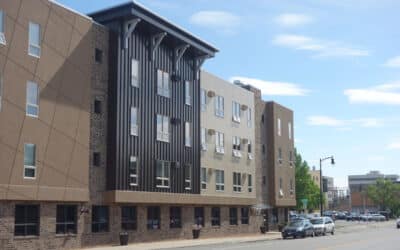History
Years before ACM, aluminum plate was the prominent choice for metal panel fabricators, manufactures, and architects across the nation. When ACM first came out, plank manufactures flooded the market with these panels, taking their lion’s share of the market away from the plate material that dominated the market. Rightfully so, composite did offer a wide variety standard colors that was more affordable, very lightweight, and easy to form. Even though ACM is used on a wide variety of jobs today, there is still a time and a place where aluminum plate has various advantages over composite material. Let’s go over the advantages of the two types of material.
What is Aluminum Plate?
Much like ACM, it is a visually flat product. Aluminum plate material is a solid piece of aluminum which is non-laminated product. Standard widths come in 36”, 48”, 60”, and 72” and the standard thickness for panel systems is 1/8 inch or .125 inches. When forming 1/8 inch aluminum material into panels the 1/8 inch material will stretch .200 of an inch. The main drawback to this is rounded edges to the panel. Using a CNC machine we are able mill off the back of the material, and then when we form the material, we are essentially forming less material. Giving the finished product sharper edges/ corners and overall, a better look. Compared to ACM material, Aluminum plate is also the ideal choice for high traffic areas. If a wall panel system is needed on a low level area of a building, look into the aluminum plate material to provide a pleasant look and maximum durability. The last huge benefit of aluminum plate is its design flexibility. With ability to weld pieces together,
then go back in and grind it all smooth gives aluminum plate a unique advantage over ACM. If you see the photo on the left you can see we were able to take multiple different sheets of aluminum, weld and grind them together, and able to create a unique panel that cannot be replicated in ACM. Aluminum plate has a lot of advantages but there are also a few disadvantages that does come with the product. Aluminum plate does not come in standard colors like composite. That means once we form the panels it would have to be painted.
CHARACTERISTICS OF ALUMINUM PLATE
- Design flexibility
- Can paint to match almost any color
- Best for high traffic areas (Very Impact Resistant)
- Visually Flat
- Easy to radius and weld
- Not Combustible
What is Aluminum Composite Material (ACM)?
ACM or Aluminum Composite Material comes in 4mm or 6mm and is a laminated product with a .020 metal skin on each side of the composite material. One big advantage that composite has over aluminum plate is the wide variety of standard colors. By having this much variety in standard colors. Fabricators are able to get larger quantities at a more affordable cost. Much like Aluminum plate, ACM is also a visually flat product that is easily formed and rolled. With the range of standard colors and it being so easy to roll and form, it is the major choice for wall panel fabricators across the United States.But that doesn’t mean it doesn’t have a few downfalls. There are two different types of composite core options available for ACM: Polythylene (PE) core and Fire Resistant (FR) core. ACM is a combustible product thus falling under the NFPA 285 building code. When looking at different ACM wall panel systems, check to see if it has passed the NFPA 285 testing. This will ensure the longevity of the wall panel system and assure the health and safety of the occupants who use the building. Another disadvantage of ACM is if you are needing a custom color, its going to be very expensive and lead times can be very long.
CHARACTERISTICS OF ACM
- Large range of standard colors
- Product is easily formed
- Rolls easily
- Visually Flat
- Lightweight





